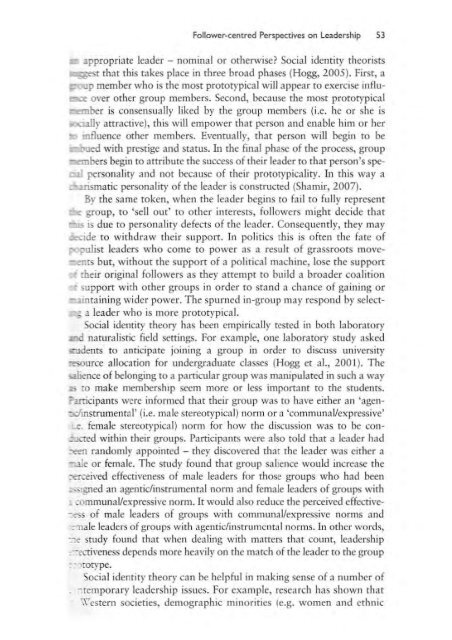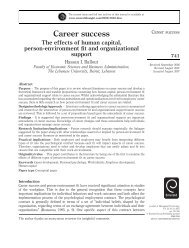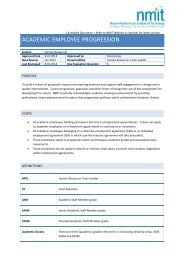Jackson Parry - Leadership, Chp 3, 41-60.pdf
Jackson Parry - Leadership, Chp 3, 41-60.pdf
Jackson Parry - Leadership, Chp 3, 41-60.pdf
- No tags were found...
You also want an ePaper? Increase the reach of your titles
YUMPU automatically turns print PDFs into web optimized ePapers that Google loves.
Follower-centred Perspectives on <strong>Leadership</strong>S3appropriate leader - nominal or otherwise? Social identity theoristslii1!'8est that this takes place III three broad phases (Hogg, 2005). First, a~ p member who is the most prototypical will appear to exercise influmerover other group members. Second, because the most prototypicalDmlber is consensually liked by the group members (i.e. he or she islIy attractive), this will empower that person i:lJld enable him or hermfIuence other members. Eventually, that person will begin to bem.nued with prestige and status. In the final phase of the process, group~ bers begin to attribute the success of their leader to that person's spea.aJpersonality and not because of their prototypicality. In this way ac::.nismatic personality of the leader is constructed (Shamir, 2007).By the same token, when the leader begins to fail to fully representIIi:lt' group, to 'sell out' to other interests, followers might decide that- is due to personality defects of the leader. Consequently, they maydt\.-ide to withdraw theif support. In politics this is often the f3te of, pulist leaders who come to power as a resu lt of grassroots moveIiZTlts but, without the suppOrt of a political machine, lose the support• meir original followers as they attempt to build a broader coalition: su pport wi th other groups in order to stand a chance of gaining orsulOta ini ng wider power. The spurned in-group may respond by select-0' a leader who is more prototypical.Social identity theory has been empirically tested in borh laboratory.md naturalistic field settings. For example, one laboratory study askedmxients to anticipate joining a group in order to discuss university::-esoUfce allocation for undergraduate classes (Hogg et aI., 200'1). Thesalience of belonging to a particular group was manipulated in such a way.IS to make membershIp seem more or less important to the students.flarricipants were informed that their group was to have either an 'agen::LI'msrrumental' (i.e. male stereotypical) norm or a 'communal/expressive'l1. fema le stereotypical) norm for how the disclIss ion was to be co n ~:xred within theif groups. Participants were also £old that a leader had~n randomly appointed - they discovered that the leader was either a=-.tIe or fema le. The study found that group salience would increase the~ceived effectiveness of ma le leaders for those groups who had beenlS.5Jgned an agenridinstrumental norm and female leaders of groups with.: .:ommunaVexpressive norm. It would also reduce the perceived effective-("55 of male leaders of groups with communaVexpressive norms and"='l1ale leaders of groups with agenriclinstrlllllcntal norms. In other words,-:e study found rhat when dealing with matters that count, leadership:- Cl.-rivcncss depends more heavily on the match of the leader to the group;')totype.Social identity theory can be helpful in making sense of a number of-.remporary leadership issues. For example, resea rch has shown that\'\'estern societies, demographic minorities {e.g. women and ethnic
















